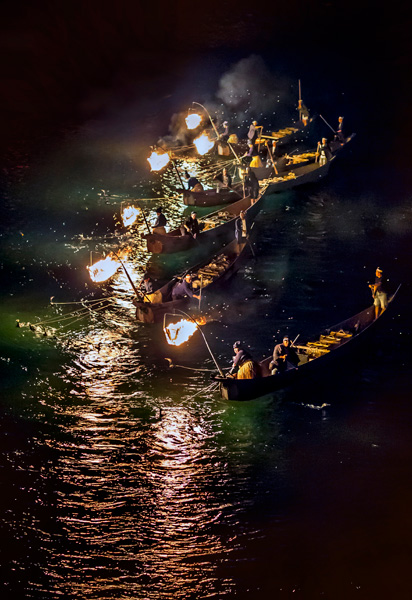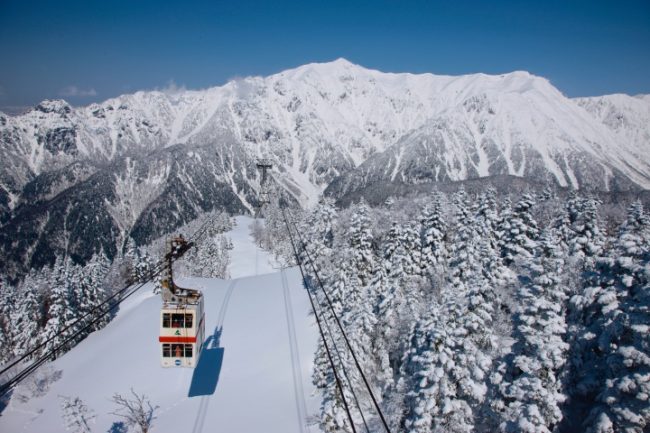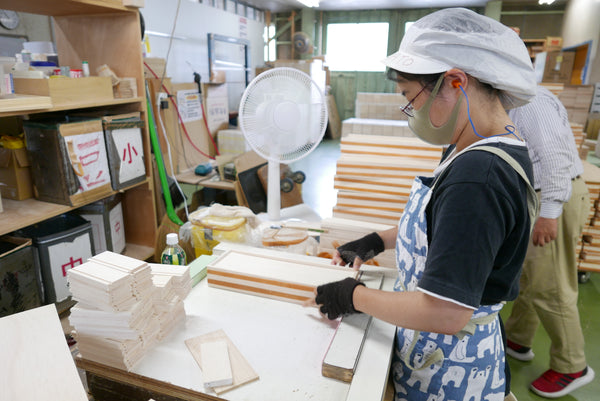 |
| Cormorant Fishing in Nagara River |
Hello everyone! From my previous posts (part 1; part 2) I've written a total of 14 activities to do in Gifu prefecture besides visiting Shirakawa-go.
The list does not end there, so I'm writing more places and activities that I hope that you will consider including them in your to-do list in Gifu for your next visit.
15. Learning the history in Hill of Humanity Park and Chiune Sugihara Memorial Hall
 |
| Hill of Humanity Park, Gifu |
Being the hero that has saved the lives of thousands of Jewish refugees, Chiune Sugihara was a Japanese diplomat that helped issuing the transit visas to Japan during WWII. These actions were highly praised and recognized from all over the world. The Hill of Humanity Park and Chiune Sugihara Memorial Hall were built in Yaotsu of Gifu to honor his achievements and preserve his memory for future generations.
16. Mt. Kinka and Gifu Castle
 |
| Gifu Castle |
Right in Gifu city, Mt. Kinka rises to an elevation of 329m and right at the peak of Mt. Kinka, there stands the Gifu Castle with the beautiful Nagara river that flows at its base.
If you want a panoramic view of the entire Gifu city, it is definitely recommended to view from the top floor of the castle to get an incredible view of the surrounding regions! Also you can ride a cable car up to the mountain too. Saves a bunch of energy for hiking for sure!
17. Cormorant Fishing on the Nagara River
 |
| Cormorant Fishing in Nagara River |
In the midst of city life, we probably wouldn't even know how to fish in this modern day world rather than using traditional methods.
Here in Gifu, you can get a chance to see 'Ukai', the ancient fishing method in Japan. This method uses cormorants (aquatic birds) to catch fishes, and this has been a Gifu tradition for more than 1,300 years!
You will see six boats with their beacons of flame and the cormorant fishing masters directing their birds, making it a uniquely fantastic sight!
18. Getting Confused in the Reversed Park (Yoro Park)
Also named Yoro Park, the Site of Reversible Destiny is designed by modern artist Shusaku Arakawa and his partner poet Madeline Gins can be said as a giant piece of artwork that will make you question your preconceived notions of balance and perspective.
Besides being a great work of art, it also surrounds Yoro Falls, and offers beautiful nature sights of sakura and koyo (maple) during spring and autumn. If you aren't good with steep walks, there's a lift that you can use to make things less trippy.
It's a place where you enjoy art, sports, and nature. Kids would also love this place as they have a kids area that has facilities such as halls, indoor pool, etc. There are also tennis courts, golf courses, and even restaurants. What more can one get?
p/s: They are closed on Mondays or Tuesdays if the Monday is a national holiday.
Besides being a great work of art, it also surrounds Yoro Falls, and offers beautiful nature sights of sakura and koyo (maple) during spring and autumn. If you aren't good with steep walks, there's a lift that you can use to make things less trippy.
It's a place where you enjoy art, sports, and nature. Kids would also love this place as they have a kids area that has facilities such as halls, indoor pool, etc. There are also tennis courts, golf courses, and even restaurants. What more can one get?
p/s: They are closed on Mondays or Tuesdays if the Monday is a national holiday.
19. Eating (and making) pretty, flower-themed sushi!
 |
| Hanazushi with rose motif (flower sushi) |
In Mino, you should definitely look for Mitake Hanazushi! Its a place where you can pay a small fee of 2,000 JPY to make Hanazushi with prior reservation (check information here).
Making hanazushi also uses local ingredients. Joining a class allows you to learn 2 different types of hanazushi that are beautiful and eye-pleasing. Rose is a city flower for the nearby city Kani, so you can try making one!
Check out Hanazushi's site here! You can call their number for reservation 5 days prior the class.
20. Participating in Ogaki Festival
 |
| Ogaki Festival, Gifu |
Wondering if there's anything to do in May? No worries! Ogaki Festival comes just in time, and it is a festival that is over 360 years, so long that it is now Japan's Important Intangible Folk Cultural Assets.
During this festival, 13 parade floats will parade through Ogaki's castle town, that creates a beautiful and rare atmosphere where everyone could enjoy. In 2016 too, this festival is listed under UNESCO's list of Intangible Cultural Heritage.
Which brings me to thinking that most Japanese festivals that I know are somewhat related with floats. Will write something about Nebuta Festival on Aomori next time!
21. Sekigahara Battlegrounds
 |
| Sekigahara |
While Sekigahara reminds me of this funny CM of Kasaneru Dolce, it's a place that any samurai history lovers should NEVER miss.
Why? Sekigahara was the site of the largest battle among the samurais in Japanese history. There were 160,000 samurais that fought in order to control the realm.
Of course, what you see is far different from what happened during year 1600. Now, this battleground offers a nice countryside view with flags and stone monuments that indicates where the military encampments of the Eastern and Western Armies once stood.
22. Ji-kabuki and Playhouses
 |
| Ji-Kabuki |
I've recently learned that there are different kinds of kabuki around Japan! There are the large ones that are performed in cities by professionals that are called o-kabuki, and ji-kabuki are performed on countrysides by amateur locals.
Ji-kabuki gained popularity, especially in eastern Gifu as soon as the art of kabuki gets its popularity throughout Japan. Watching Ji-kabuki is a different experience than O-kabuki, as you will hear audiences shouting words that are motivating to the actors, or throwing donations to actors that are performing well.
If you want to check the schedules for Ji-kabuki, visit here!
23. Try the Hida Beef!
 |
| Hida Beef |
Beef is an important aspect of Japanese meal. If you say 'meat' in Japan, it's assumed to be beef instead of other forms of meat.
Kobe beef is famous among international gourmets, but Hida beef is also very popular in Japan! Hida beef is a kind of succulent meat that melts right in your mouth. Try it as steak, sushi, in your nabe (hotpot), or any other ways that is offered! You can say that it's a satisfaction-guarantee meat!
24. Getting Amazed at the Subzero Forest in Akigami Hot Spring
 |
| Akigami Onsen Subzero Forest |
If you're in Gifu during Winter, Shirakawa-go is not the only place with nice light illuminations! Consider bringing your other half to Akigami Onsen for its Subzero Forest and you will be amazed at the winter-only sight!
In the afternoon you can also see this place in in bluish-white tones, and it is open throughout January until March. If you are interested to stay overnight in an onsen during winter, consider here as you also get the chance to taste local dishes for dinner in ryokans!
If you wish to check out their information, visit their Japanese site here.
25. Checking out the Monet's Pond
 |
| Monet's Pond, Gifu |
If you are following a lot of Japan travel page on Facebook, you might have seen this pond. It is so beautiful that it looks like a painting straight out by Monet!
This pond, although surprisingly nameless as it was just an ordinary pond next to Nemichi Shrine until its exposure to social media in 2015. Best time to visit would be around early summer so it will have water lilies bloom, that would make it to look even more similar to Monet's Water Lillies!
If you're here in autumn, you will see maple leaves that surrounds the pond, making it beautifully red!
26. Ena Valley
 |
| Ena Valley and Onsen |
Ena Valley is a man-made lake formed by the construction of Oi Dam in Gifu. Here, sightseeing boats cruise upon its waters that shows visitors different rock formations (there's a lion one in particular that is eye-catching) in the banks. This place offers beautiful view throughout all four seasons.
If you are going around on a cruise, it's a cruise of 30 minutes, otherwise if you wish to enjoy more hot springs, you can also go for their hot spring bath, and even spend your evening here to see the sunset!
Website for the cruise is here. English pamphlet is here.
Hope the information helps!
Until next time!
Here sums up a lot of things that you can do in Gifu and I hope you'll add them into your list next time! There are so much more to explore in Gifu that I have yet to list here for sure, such as enjoying the Itadori Hydrangea Festival or to following the trails of Matsuo Basho in Oku no Hosomichi Musubi no Chi Memorial Hall. Regardless there are a lot to do!
For a full list of the places of visit, consider this site as it contains more comprehensive information in English!
Hope the information helps!
Until next time!

















